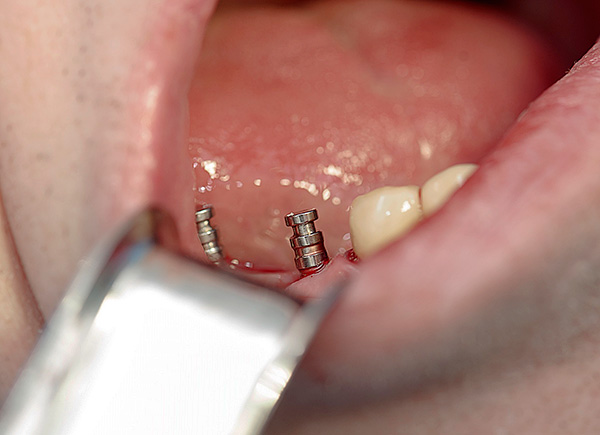
Next you will learn:
- What types of dental implants exist today and how do they differ;
- How much can an implantation of one and several teeth cost, depending on the chosen implantation method;
- What stages and procedures can you wait for when installing a dental implant and what time costs you need to prepare in advance;
- What are the features of classical (two-stage) implantation, which brands of classical implants are available on the market and how they differ in price;
- Is it possible to install an implant in the well of a tooth that has just been removed without waiting several months for the gums to heal;
- What is the specificity of the so-called basal dental implantation (with immediate loading), which allows you to restore the beauty of a smile and the ability to chew food in just a week;
- What is mini-dental implantation and in what cases implants are installed as sparingly as possible, through a puncture of the gums (without incisions);
- And also learn about the prices of dental crowns from different materials and important points to consider when you see that the clinic has a special offer or offer for the installation of implants ...
Those who plan dental prosthetics on dental implants today are often confused, because you have to choose not only the brand of the implants themselves, but also the method of their installation. The fact is that modern dental implantation is divided into several directions, and although the goal is always the same - restoration of missing teeth - but the methods and technologies for installing implants, and even the method of their attachment to bone tissue can vary significantly.
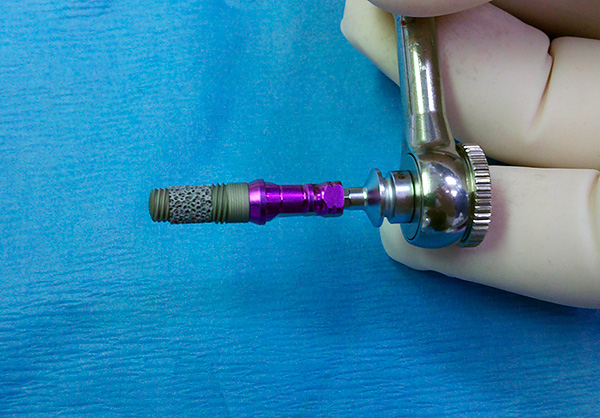
In addition, some patients may not be able to use a certain type of dental implantation at all due to contraindications, and preliminary surgical manipulation may be necessary due to the need to build up bone tissue if it has already atrophied since the tooth was removed.
About what a modern dental implantation is, what types of it are and how the price situation is today - we will talk about all this in more detail ...
What types of dental implants exist today
Perhaps the first thing you should know about the types of dental implants that exist today is that according to the timing of implant placement from the moment of tooth extraction, two methods are distinguished (in medical terminology they are called treatment protocols):
- The classical protocol of dental implantation (the so-called two-stage implantation) - in this case, the problem teeth are first removed, then you need to wait until the gums are completely healed and the bone tissue is restored at the site of the extracted tooth, and only then are the implants installed. Installation of implants is possible only with a sufficient volume of bone tissue, and in case of lack of it, preliminary bone growth is carried out - for example, sinus lift surgery;
- And the second option is the one-stage protocol of dental implantation (the so-called one-stage or one-stage dental implantation) - in this case, the implant is installed simultaneously with the extraction of the tooth, that is, immediately into a fresh hole.
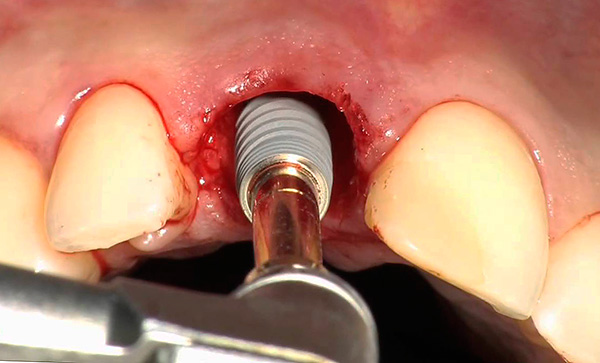
The concept of a classical implantation protocol should not be confused with the concept of classical implants, that is, the most widely and long-used. As a rule, when performing dental implants using classical implants, it is assumed that the final prosthetics, that is, for example, installation of a crown on the implant, will be performed only after complete engraftment (osseointegration) of the implanted titanium “screw”.Simply put, from the moment the implant is installed, the patient has to wait about 4-6 months before a permanent crown or other denture design is installed that can fully take on the chewing load.
On a note
Classic implants can be installed as a two-stage method of implantation, or one-stage - depending on the characteristics of a particular clinical situation.
In this regard, it is useful to know that today a separate direction in dental implantation exists and is developing dynamically - the so-called basal dental implantation (otherwise - implantation with immediate loading). Typically, this technique involves prosthetics in an extremely short time - no more than a week. That is, the implant can be installed immediately after tooth extraction, it initially holds firmly in the jaw and you can give a chewing load to it almost immediately, that is, make and install permanent crowns.
With basal implantation of the teeth, the volume of the bone tissue of the alveolar process is often not critical - you will not have to build bone in most cases, since the basal implant is implanted in the deep (basal) areas of the bone. Compared to the spongy bone tissue of the alveolar processes, into which classical implants are implanted, the basal bone is much denser and stronger, due to which the basal implants are ready to withstand increased loads immediately after installation.
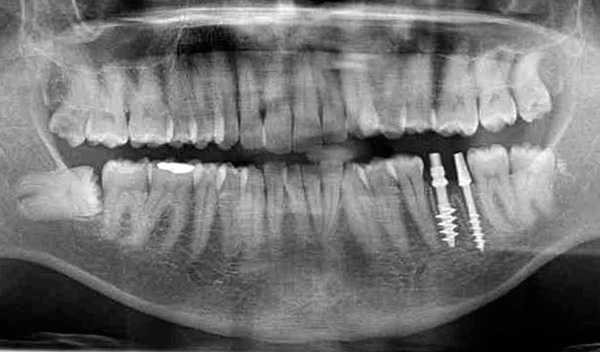
On a note
A few years ago, the method of basal implantation implied the installation of very peculiar implants - without thread, just in the form of the letter "T", with a flat base. The base was located in the deep layer of the jawbone - the basal section (hence the name of the technique).
Today, T-shaped disk implants are practically no longer used, because the process of their installation is too traumatic (through the side incision of the gums and bones). They were replaced by root-shaped basal implants, outwardly quite similar to the classic ones, but adapted to the immediate loading technique. They have a special thread and also involve the basal part of the bone. At the same time, the main advantage of basal implants has been preserved - the prosthesis can be fixed on them literally within a week, that is, without a long wait. Therefore, the technique today is increasingly being positioned not as basal, but as implantation with an immediate load of the prosthesis, and in advertising materials it can be presented as a new method of dental implantation (which, in general, is not far from the truth).
The basal implants are shown in the photo below:
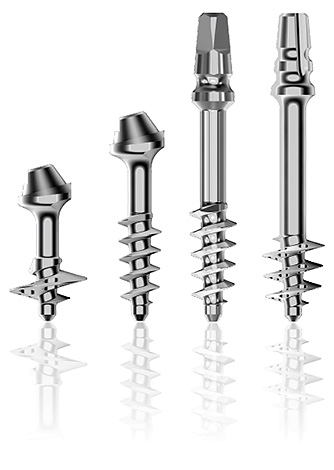
Speaking about the types of dental implantation that exist today, it is also worth noting the so-called mini-implantation: in this case, very thin and small implants are used, which are installed with minimal surgical intervention (the bone does not even have to be drilled, since the implant is simply screwed into it like a self-tapping screw) . However, it should be borne in mind that the purpose of mini-implants is only to support removable dentures, since they would not be able to withstand a full chewing load (a removable denture takes on the main load).
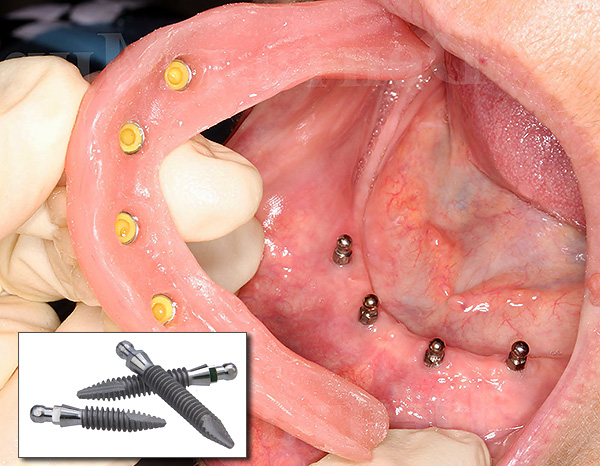
On a note
Today in advertising materials for clinics you can find such a service as laser dental implantation, and it is positioned as ultramodern and as sparing as possible. So, it is useful to keep in mind that laser implantation of teeth by an independent method, in fact, is not - the laser during the procedure is used only as a gentle alternative to a metal scalpel. The laser scalpel allows you to effectively perform tissue incisions (both gums and bones), while it has an antibacterial effect and minimizes bleeding.
Now let's see how much tooth restoration can cost in one way or another, and then we'll figure out what is the significant difference between the methods of dental implantation available today and why in some cases significant deviations from the declared value are possible.
| Tooth restoration options | Classical implantation | Basal implantation | Mini implantation |
| Restoration of 1 tooth using a ceramic-metal crown | from 35 000 rubles | from 35 000 rubles | Not applicable |
| Restoration of 1 tooth using a zirconia crown | from 50 000 rubles | from 50 000 rubles | Not applicable |
| Restoration of the entire dentition | from 350 000 rubles | from 150 000 rubles | from 130 000 rubles |
Basic steps and procedures for installing implants
As an example, consider the classical (two-stage) implantation method. Although the technique is called two-stage, however, as you will see below, in reality there are not two steps, but much more:
- Preparation for treatment - initial doctor’s consultation, visual assessment of the oral cavity, diagnostic procedures (orthopantomogram, that is, a panoramic picture of both dentitions), drawing up a treatment plan, choosing implant models and concluding a contract;
- Extraction of problem teeth (usually under local anesthesia), prescribing and issuing recommendations for comfortable postoperative rehabilitation;
- The stage of healing of the injured gum and restoration of bone tissue in place of the extracted teeth. This may take 2-4 months;
- Surgical stage of implant placement. The operation is also usually performed under local anesthesia. After installing the implant on it, a stub (gum shaper) is fixed;

- Temporary prosthetics. After a short period of time after the implant has been implanted, a temporary prosthesis is made, which allows to restore the appearance (aesthetics) and partially the functionality (however, it is impossible to load the temporary prosthesis too much, since the process of osseointegration of the implant has only just begun);
- And, finally, permanent prosthetics - usually carried out 2-4 months after installation of the implant in the lower jaw, or 4-6 months after installation of the implant in the upper jaw. During this time, a complete implant fusion with bone tissue occurs (during these months you will have to visit a doctor 2-4 times).
Now about the additional procedures. They are not always carried out - only when necessary, and are paid separately. Note the most common:
- Dental and gum treatment, plaque and tartar removal, which helps restore the natural color of enamel - this is necessary for the exact selection of the shade of dental crowns;
- Submission of additional tests in case of health problems;
- Bone tissue growth - required if its volume is not enough to install the implant (carried out by replanting natural or artificial bone material);
- Gum repair - a surgical operation that is sometimes required when changing the contour of the gums (mainly due to bone atrophy).
Next, let's talk about the features of each method of dental implantation and try to figure out which technology is better in a given situation and how much you will have to pay in each individual case.
Classic two-stage dental implantation
As noted above, in the classical two-stage dental implantation, the problem tooth (or teeth) is first removed, then the gums need to be healed and the bone tissue restored, then the implant itself is installed, the healing of which must be expected from 2 to 6 months. This type of implantation is the longest in time.
The following example is shown in the photographs (installation of an implant in the place of the extracted tooth after healing of the hole):
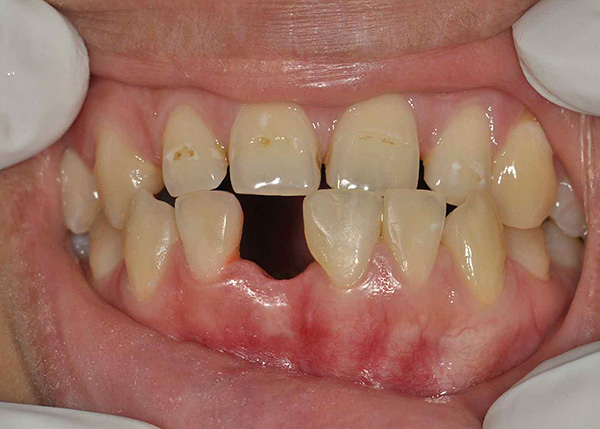
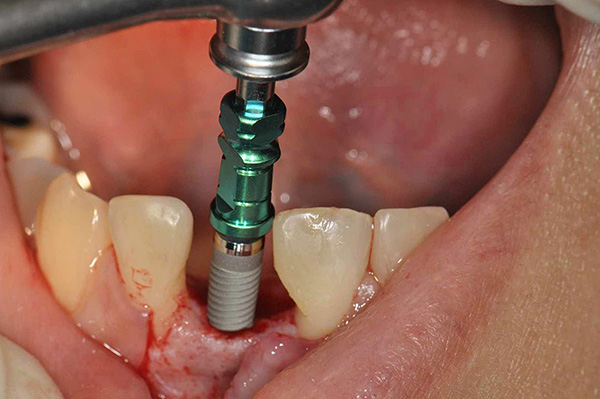
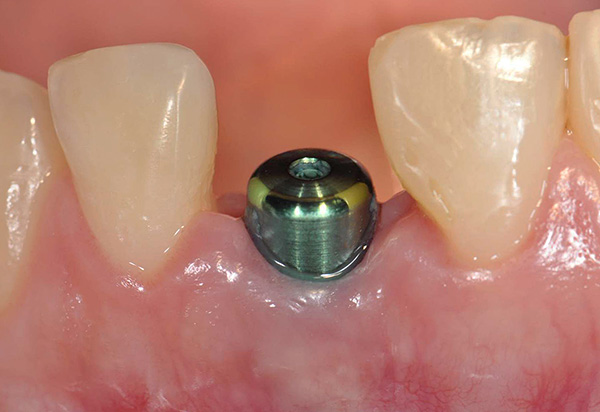
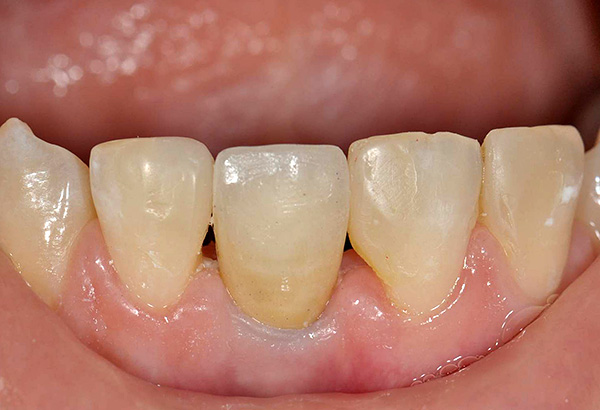
On a note
Classical implantation places the highest demands on the condition of the bone tissue, therefore, after tooth extraction, it must take about 3-4 months before the implant can be installed. Bone tissue must fully recover.
If there is a lack of bone for fixing the implant, its preliminary growth is carried out.
Advantages of the method:
- This type of implantation in dentistry has more than half a century of history, and extensive experience has been accumulated to minimize the risks of possible failures (implant rejection and other complications);
- The method is mastered by a large number of implantologists, therefore it is usually not a problem to find a suitable clinic and specialist in almost any more or less large city;
- A wide range of implant brands is available - from budget Chinese to premium models (German, Swiss);
- High aesthetics are achieved, since much attention is removed from the formation of the contour of the gums around the crown;
- On classical implants, almost any dentures can be fixed (a single crown, a bridge, or even a conditionally removable denture).
Cons of the classical two-stage dental implantation method:
- High duration of the entire procedure - from the moment of tooth extraction to the moment of installing a permanent crown on the implant, six months or more can pass;
- Often, bone tissue growth is required, and this is an additional cost of money and time (for example, a sinus lift operation will cost about 15-30 thousand rubles);
- Relatively traumatic implant placement - the gum is cut, then a hole under the implant is drilled into the bone. Many patients perceive the fact of bone drilling in a panic.
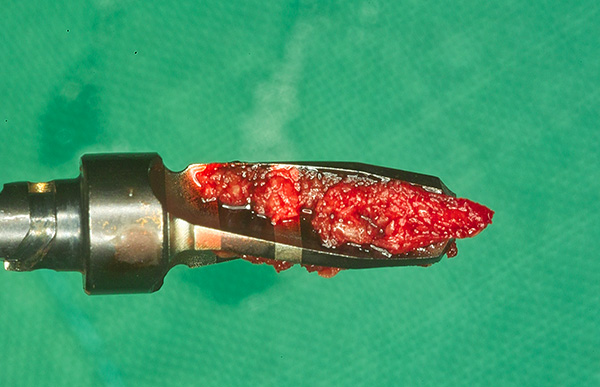
Nevertheless, it is two-stage implantation using classical implants that is today one of the most commonly used types of dental implantation, allowing you to restore the beauty of a smile and the ability to chew food normally for a huge number of people around the world.
A few words about the cost of classic dental implants and abutments for them
Generally speaking, most of the price of the entire treatment (no matter what type of dental implantation is used), as a rule, is occupied by the cost of components - first of all, the implants themselves, as well as the abutment and abutment formers.
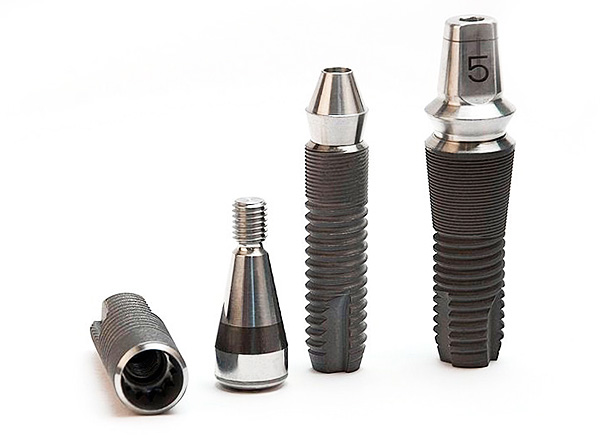
Today, dental implants are produced by several dozen companies. The main ones are concentrated in Israel, Germany, Sweden, Switzerland and the USA. Each brand has its own characteristics, advantages and disadvantages, however, many specialists are inclined to believe that it’s not so much the implant brands that you need to choose, but rather the doctor - it depends on his experience and professionalism how long the implant lasts.
Here are examples of the minimum prices in Moscow for the classic implantation of 1 tooth, depending on the brand chosen:
- Implantation using the Alpha BIO implant (Israel) - from 35,000 rubles;
- MIS (Israel) - from 40,000 rubles;
- XiVE (Germany) - from 70,000 rubles;
- Astra Tech (Sweden) - from 70,000 rubles;
- Straumann (Switzerland) - from 80 000 rubles;
- Nobel (USA) - from 90 000 rubles.
In the photo below - Xive implants:
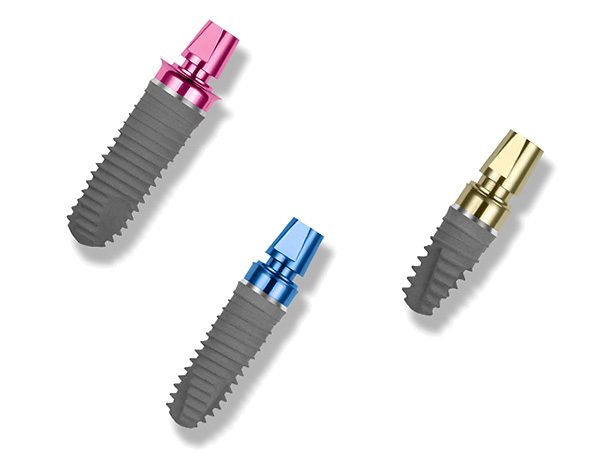
As a rule, the price indicated by the clinics includes basic preparatory procedures (an orthopantomogram, a doctor’s consultation to identify contraindications from the body, treatment planning), as well as local anesthesia, the installation of the chosen model of a dental implant directly, subsequent consultations of the doctor for the period of engraftment and warranty .
Additional suprastructures — gum shapers and abutments — are usually already included in the base price for tooth implantation. By the way, the more expensive the brand of implants themselves, the higher the cost of components (for example, the cost of a conventional MIS abutment is about 1000 rubles, but Nobel or XiVE - from 7-8 thousand rubles).
On a note
It is important to keep in mind that the cost of the dental crown that will be installed on the implant is not included in the price. In other words, for example, if you want to install an inexpensive Israeli Alpha BIO implant, and put on it a high-quality zirconia crown, then you can safely add to the base price for implantation (from 35,000 rubles) the cost of a zirconia crown (about 20 000 rub.)
Immediate implantation of teeth (it is one-stage or immediate)
Immediate dental implantation implies the installation of an implant in the well of a newly extracted tooth, which in comparison with the two-stage option provides an important advantage - you do not need to wait 3-4 months before the bone tissue at the site of the extracted tooth is fully restored (this is the main plus methods).
An implant specially designed for this protocol is placed in a fresh hole where a removed tooth root was located a few minutes ago, after which the space around is filled with artificial or natural bone material - to accelerate bone tissue regeneration. Then the implant is closed with a plug (gingival shaper) and left for 3-6 months for engraftment.
The photographs below show an example of implantation of a newly removed front tooth (which cracked from a mechanical injury):
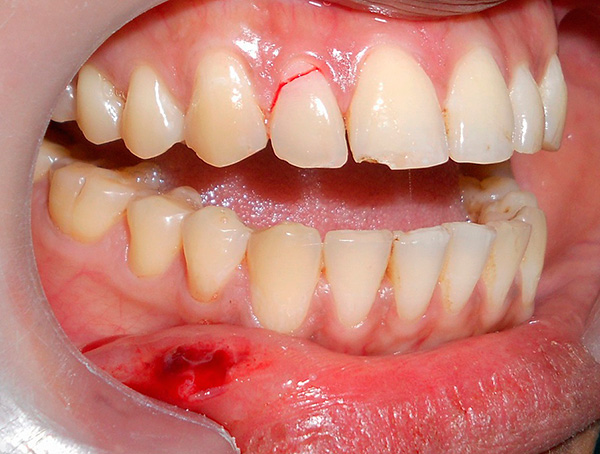
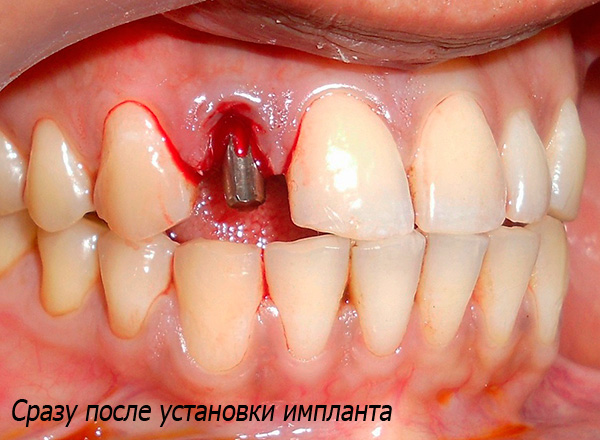
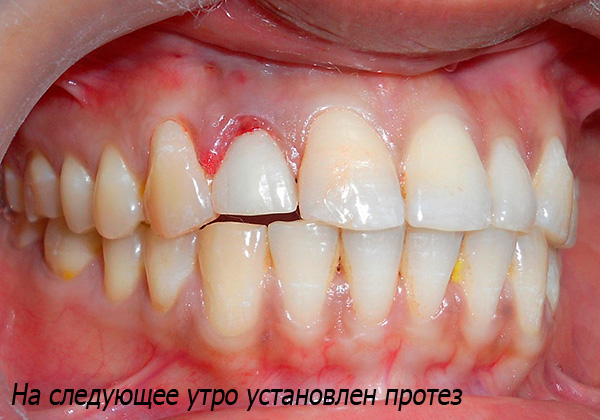
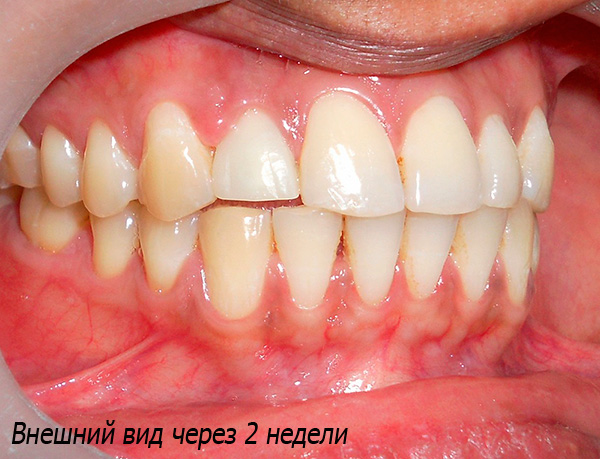
On a note
In some situations, when the condition of the bone tissue allows and the implant has a fairly good primary fixation, an inexpensive metal-plastic crown can be installed for the period of osseointegration of the implant. For front teeth, this is especially important, since it allows you to restore the aesthetics of the dentition in express mode. Considering that the front teeth are not involved in chewing food, the load on the implant will be minimal.
Unfortunately, immediate implantation is not always possible. For example, in some cases, it is first necessary to urgently remove a diseased tooth, and then for a long time to deal with inflammation, which was provoked by an infectious process on the roots of the tooth. In such situations, simultaneous implantation can be quite risky, since it is associated with an increased likelihood of structural rejection against the background of an incomplete inflammatory process.
As for today's prices for simultaneous implantation - they are generally similar to those for the two-stage protocol. The advantage of the one-stage option is not the price, but the ability to complete the prosthetics of lost teeth for several months faster.
Immediate loading basal implantation
Basal dental implantation (its modern name is implantation with immediate loading, or in the American version - Immediate Load), belongs to the category of express techniques.
For implantation with immediate loading, as a rule, single-component implants are used (that is, they are integral with the abutment) and, they are slightly longer than classical designs and have a more aggressive thread. This allows you to securely fix them in dense bone tissue - in the basal layer or cortical plate, which are characterized by increased strength (they have practically no capillaries, unlike the spongy layer, so they do not undergo atrophy, that is, they do not contract in volume and remain as strong as possible ) Therefore, this type of dental implantation is usually performed without preliminary bone tissue extension, since in most situations good fixation of implants can be achieved with available volumes.
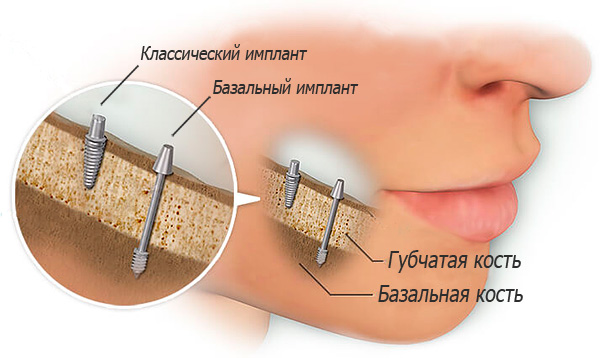
The most important feature of the basal method of dental implants is the possibility of almost instant prosthetics. Namely, literally already 2-3 days after the installation of implants, fixed prostheses are fixed. They are made of metal-plastic and have a small plastic base, the prosthesis is quite light.The artificial gum, which practically does not differ in appearance from the natural one, allows to improve the aesthetics of the dentition (often with a long absence of teeth uneven subsidence of the bone with the gum is observed).
Immediate prosthetics performs another important function - the prosthesis is a stabilizer for installed basal implants (it fixes them in a certain position and prevents them from moving). In addition, the prosthesis provides a transfer of chewing load to the implants, which allows to accelerate the process of osseointegration.
It is worth noting that basal implantation is carried out mainly in the absence of 3 teeth or more. For single restorations, the technique is much less applicable, since in this case, higher requirements for the condition of bone tissue and, in addition, with high probability, gum plastic may be required to provide the necessary aesthetics.
On a note
One of the varieties of this direction is the All-on-4 implantation method (Nobel's patented technology). The essence of all-in-four dental implantation is that only 4 implants are used to restore the complete dentition, two of which are fixed in front and directly, and the other two on the sides and at an angle. The prosthesis is attached within a week after surgery.
The “all on four implants” method allows you to significantly save (almost 2 times in comparison with the price of restoring the entire dentition with the classic type of implantation), as well as returning to a full-fledged lifestyle in just a few days.
The advantages of immediate implantation of dental implants:
- the ability to quickly restore the aesthetics and functionality of teeth (within a week);
- less trauma during implant placement and, as a result, simpler and faster rehabilitation;
- in most cases, you can do without surgery to build bone;
- tooth restoration is possible with periodontitis and periodontal disease;
- relatively low cost of prosthetics on basal implants.
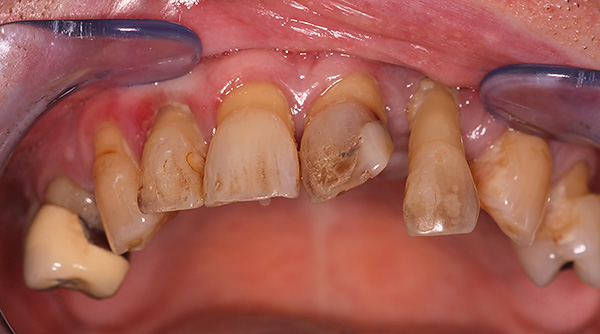
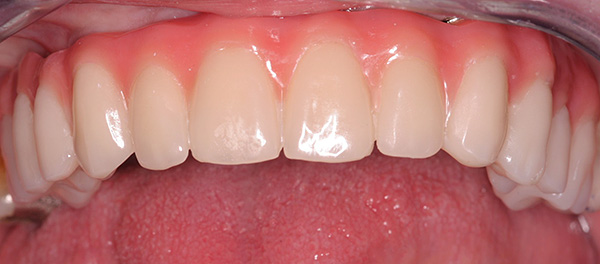
Cons of this type of implantation:
- Compared to classical implantation, a little lower aesthetics, because a prosthesis with artificial gum is used;
- almost not used for single restorations (when only 1-2 teeth are missing);
- Only a few implantologists are fluent in the method, since this is a relatively new technology for dental implantation.
The approximate prices for implantation of teeth with immediate loading in Moscow are shown below on the example of complete restoration of the dentition (implant placement and fixation of the prosthesis from metal-plastic):
- Full prosthetics on 8 implants Alpha BIO (Israel) - 280 000 rubles;
- Full prosthetics on 6 implants ROOTT (Switzerland) - 300 000 rubles;
- All-on-4 prosthetics on 4 Nobel implants - 300,000 rubles.
It is worth noting that implantation with immediate loading, as a rule, is “turnkey”, that is, all necessary procedures and materials are included in the price.
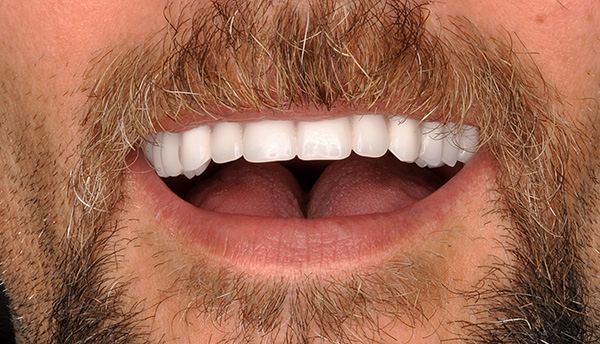
On a note
Both with the classical type of implantation and with implantation with immediate loading, implants are often installed with a less traumatic (minimally invasive) method - at least, this is how clinics position it. At the same time, it is sometimes stated that the implant installation process occurs without incisions and sutures (sometimes in advertising they write about the so-called non-surgical implantation of teeth).
It is useful to keep in mind that advertising is a little cunning - to access the bone tissue through the gums one way or another you will have to make an incision. It just may not be longitudinal, as usual, but circular. That is, the operation, in fact, is performed, the incision is present, but it is as sparing as possible, and suturing may indeed not be required.
Mini dental implantation
Perhaps the first thing you should know about mini-dental implants is that this type of dental implantation is not a complete replacement for the classical technique.
The fact is that mini implants use thin implants, literally about 2 mm in diameter (there are various brands, but MDI are considered the most popular). Due to the small size, mini-implants are not able to withstand a significant load, therefore they are used only to support lightweight removable prostheses (and also sometimes used in orthodontics in combination with braces).
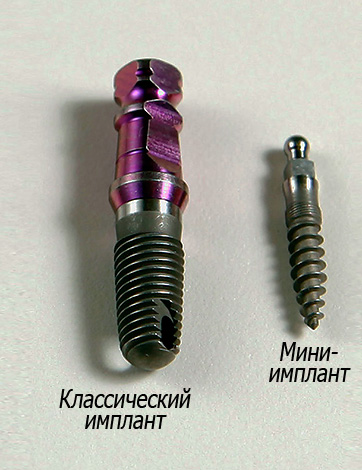
In other words, it is not possible to put a crown on a mini-implant, since in this case the bone surrounding the thin implant simply could not withstand the masticatory load transmitted to it.
Be that as it may, mini-implantation of teeth is a fairly modern technology and allows patients to receive “new teeth” in an extremely short time - a removable denture is attached to the mini-implants for several days after their installation.
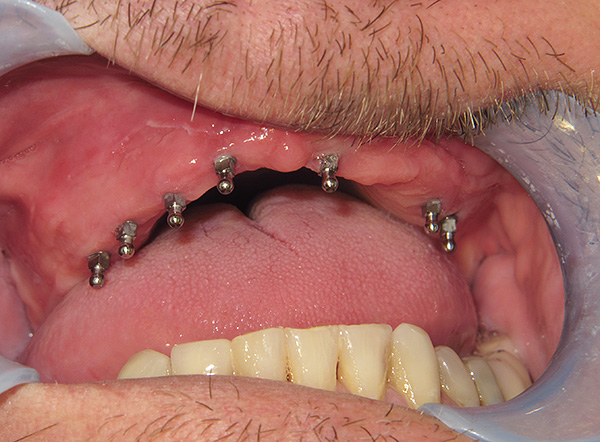
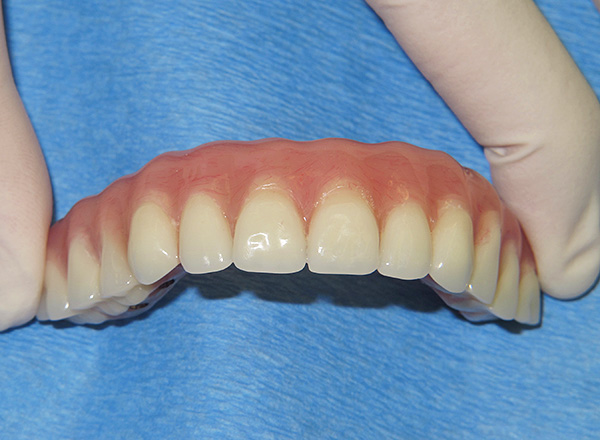
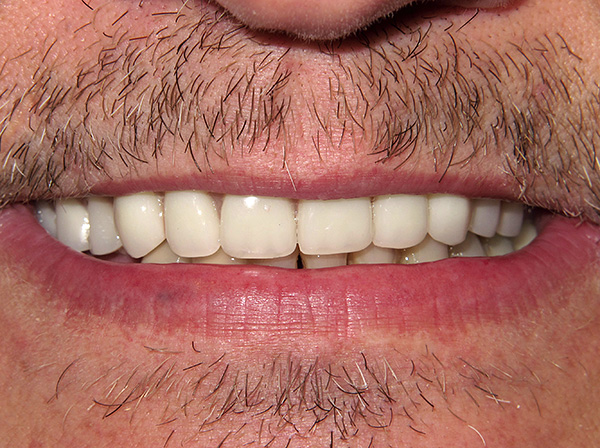
There are additional advantages:
- Mini-implants are installed using a minimally invasive (sparing) method - the implant is simply screwed into the bone directly through the gum, like a self-tapping screw;
- Another significant plus is the low price for this type of implantation - the cost of restoring a complete dentition is from 130,000 rubles;
- As with basal implantation, the requirements for bone condition during mini-implantation are not high (that is, mini-implants can be installed even with significant atrophy of the alveolar processes).
Prices for crowns used in prosthetics on dental implants
It should be borne in mind that dental implantation is a complex procedure, and it is necessary not only to install an implant (acting as an artificial tooth root), but also to fix a prosthesis on it. The cost of such a prosthesis can vary significantly, and sometimes makes a very significant contribution to the cost of the entire treatment.
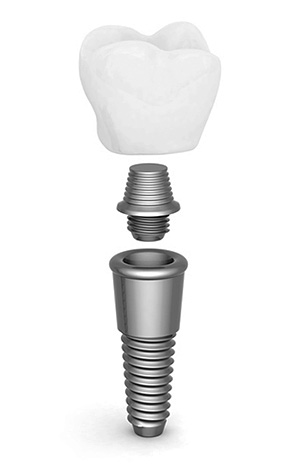
Immediately after the installation of implants (usually with the classical method of implantation), dents in the dentition are sometimes closed with inexpensive temporary dentures. An example is an artificial denture (a butterfly prosthesis, which got its name due to the fact that in addition to 1-2 artificial teeth, its design provides 2 hooks on both sides, which resembles butterfly wings). The cost of such prostheses is low and starts at about 3000 rubles. After the implants grow together with the bone, you can proceed to permanent prosthetics.
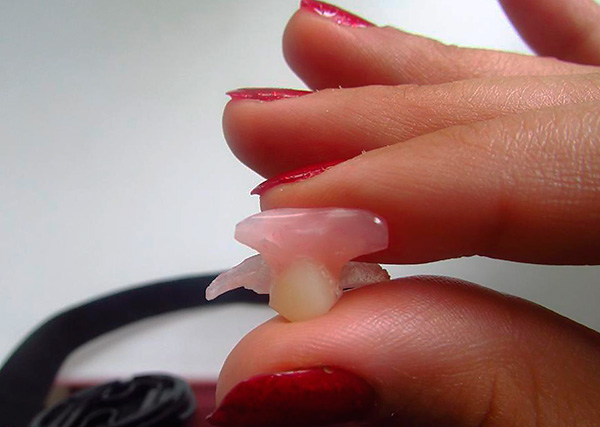
Dental crowns mounted on implants can be single (that is, one tooth), or be present in the dental bridge (for several teeth) or a removable denture.
On a note
Removable dentures on implants should be chosen if most of the dentition is missing. And not only because of the low price: in the design of such prostheses, in addition to crowns, there is also a plastic base. In fact, this is an artificial gum, designed to hide the flaws of the present, which becomes unaesthetic due to sagging bone tissue due to atrophy. In this situation, mucosal plastic surgery is inappropriate.
The material from which the dental crown is made largely determines its value. Options may be as follows:
- Metal-plastic crowns - they have a metal base (cobalt-chromium or nickel-chromium alloy), and the outer coating is plastic. Regardless of the type of dental implantation, such crowns are mainly used as a temporary option, and they are quite light in weight, look more or less aesthetically pleasing and most importantly, they can be corrected in case of a breakage directly in the patient’s mouth (the prosthesis does not need to be treated with high temperatures, as is the case with cermets). As for the minuses, plastic is still not the most aesthetic material, moreover, it is porous, and over time it is painted. The cost of such crowns starts from 1500 rubles;

- Ceramic-metal crowns are in many respects similar to metal-plastic, only a layer of ceramics is used as an external coating. It is believed that these are the most optimal crowns in terms of price and quality. They are quite durable and surpass metal plastic crowns in aesthetic characteristics. Among the minuses - the metal base is not transparent, so the color of the tooth may not be completely natural (such crowns are best used to replace the posterior teeth). In addition, some patients may experience an allergic reaction to the alloys used. The average price for ceramic-metal crowns in Moscow is around 7-10 thousand rubles;

- And finally, zirconia dental crowns. To date, zirconium dioxide is considered the most advanced material for the manufacture of dental crowns, it is characterized by increased strength and white color (while, unlike metal, it is capable of transmitting light). It is usually used as a basis, and on top it is covered with a thin layer of ceramic. The shape of the crown is planned on a computer, and then sawed on a machine from a single piece. This ensures the most accurate positioning of the crown on the implant and high aesthetics. The service life of zirconia crowns is more than 20 years. The average cost of such crowns in Moscow clinics is about 15-20 thousand rubles.

A few words about promotions and special offers for dental implants
Today, many dental clinics conduct various promotions and offer discounts on various types of dental implants. It is important here not to chase the minimum price, but to adequately approach the choice of both the clinic and (first of all!) The implantologist.
Sometimes, the unnaturally low price offered for this or that type of dental implantation hides certain risks: the use of economy-class implants and (or) the work of inexperienced implantologists. Clinics can also save on materials for prostheses, diagnostic procedures, etc.
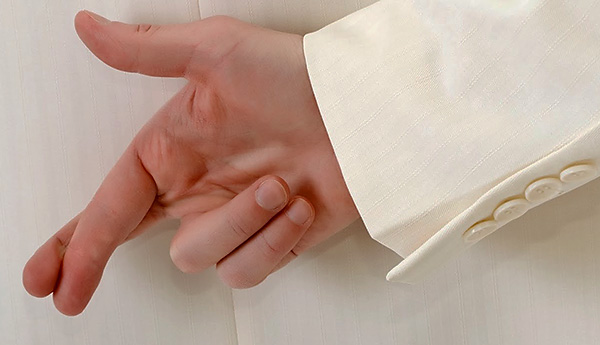
There are also more sophisticated approaches in clinics that are covered by a low share price (see the review below), when in reality the price is significantly higher than the originally declared one.
Feedback
“I was led by an action - it was proposed to install an Israeli implant for 29,900 with a crown. After consulting a doctor, the price remained unchanged, but in the end it turned out that to install the implant, it was still necessary to implant the bone, some additional membranes were also used. The contract stated what was included in the declared amount, but no one said that I would need more. As a result, he paid about 60 thousand (!!!) for one tooth ... "
Andrey, Moscow
Of course, you should not refuse from promotions and special offers for dental implants, but you should be careful and be guided by common sense. In addition, it can be cheaper to be treated with a small discount from a good doctor in a good clinic than with a huge discount in a bad clinic from an inexperienced doctor.
If you have personal experience in installing certain dental implants, be sure to share it by leaving your review at the bottom of this page (in the comments box).
Useful video about the cost of dental implants today
A bit of theory and a clear demonstration of what you can expect in the office of an implantologist

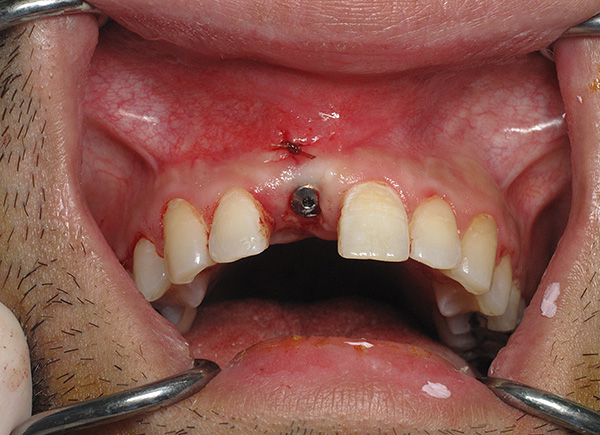
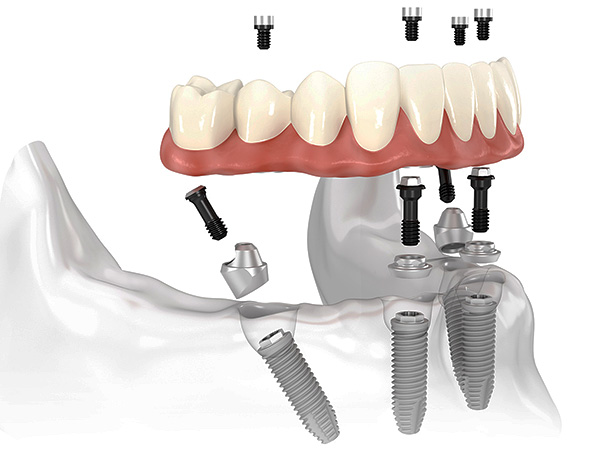
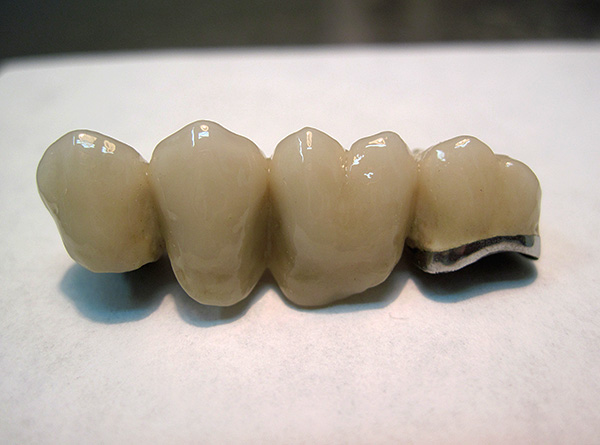
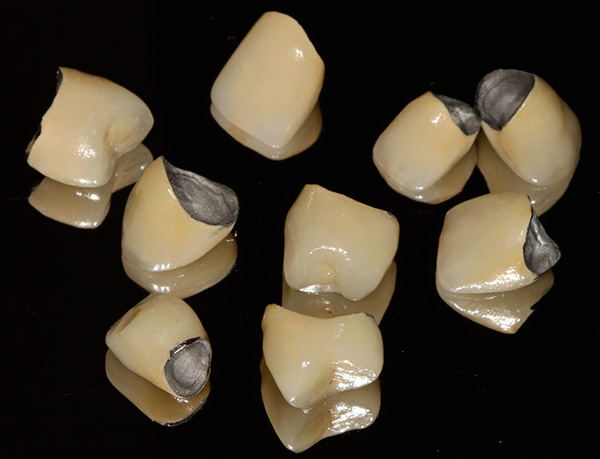
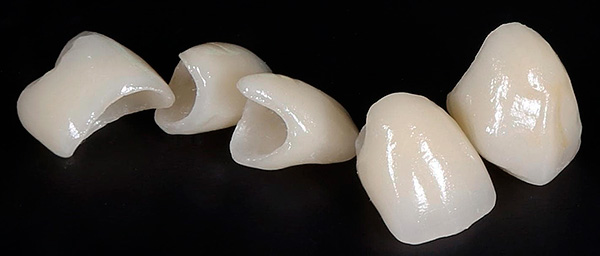

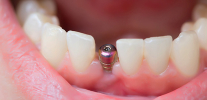
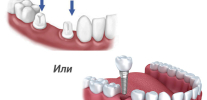
A few days ago, two teeth were removed from the bottom. Now I’m going to put implants, I chose a konmet on the advice of a doctor. Removal was easy enough, but occasionally a slight pain in the gum appears. You won’t be able to go to your doctor in the coming days, so tell me, please, what could it be? And it will not affect the further installation of the implant? Thanks in advance for your reply.
Good afternoon, pain after tooth extraction is normal. Most likely, the healing process has not been completely completed (the pain may last for several days), but in any case, your doctor will diagnose before installing the implants, and if any complications are detected, the implantation will be postponed.
Hello. I decided to put an implant, dug up a bunch of information and reviews. Another interesting question is how the condition of bone tissue is determined at the site of a tooth that has already been removed a long time ago. And how do you know if an implant will take root? It’s just that I don’t have an upper tooth for a long time and I want to understand approximately how difficult it will be for me to undergo this procedure.
Hello, Hope. Initially, you need to do computed tomography, it can determine the volume and quality of bone tissue. In our clinic you can do all this at a free consultation (diagnostics are also included in it). If there is the necessary bone volume and there are no contraindications for health reasons, then there should be no problems. If there is not enough space to install the implant, then additional bone grafting may be required.
If there is no tooth for a long time, then the probability of atrophy is high, especially if the tooth is absent on the upper jaw in the sinus zone. As a rule, we lose up to 60% of bone volume in the first year after tooth extraction.
Please advise. I have been wearing removable dentures for 20 years. The gums began to decrease, especially the lower. When examining a CT scan, the doctor said that even 4 implants have nothing to install. If only 2, and then in doubt. Maybe I just need to make the best removable dentures? Advise a not very expensive clinic and a good doctor.
Regards, Love.
Hello Love. Removable prosthetics is not the best option, since it only replenishes the masticatory load by 50% and the quality of life is deteriorating due to various inconveniences associated with wearing dentures. Your case is just a striking example of what I constantly tell patients about - bone tissue atrophy as a result of removable prosthetics and the complications associated with this. As an alternative to removable prosthetics, one can consider prosthetics based on bicortical implants, which are installed in denser areas of bone tissue, and even severe bone atrophy is not a contraindication to this type of prosthetics. The method is called BASAL COMPLEX or basal implantation with immediate loading. You can contact our clinic - we specialize in tooth restoration in difficult cases. If you live in Moscow, you can make an appointment for a consultation and diagnostics (free). If you are from another city, then send your computer tomography to the site’s mail, we will advise you for free.
I’m so afraid of the dentists that it came to the point that I had to put the implant in the end in order to maintain a presentable appearance. Advice is already flowing from here, even if your teeth do not bother you much, go to the doctor.But in the end I was satisfied, everything went smoothly, and the excellent doctor just got caught. Now at least not ashamed to smile.
And I put the implant MIS, Israeli. I gave about 37 thousand for one tooth (I didn’t count it with all costs). In general, I’ve been wearing the rules for a year now - there were no problems.
She also implanted her front tooth, in an accident last summer she knocked out.
I read that a complete prosthesis can be installed on mini implants. How much less reliable will it be than if the prosthesis was installed on basal implants? And will there be a difference in comfort?
Hello Olga! Mini implants are used only for temporary fixation of a removable denture. And basal implants are implants for permanent prosthetics, therefore, it is not entirely correct to compare these two systems.
If we are talking about permanent prosthetics, then mini-implants are not used in this case.